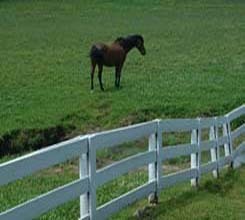
- Capital City:
- Frankfort
- Nickname:
- Bluegrass State
- Motto:
- United we stand, divided we fall
- Statehood:
- June 1, 1792 (15th)
- Origin of State's Name:
- Based on the Iroquois Indian word "Ken-tah-ten," meaning "land of tomorrow." or "dark and bloody ground"
- Largest City:
- Louisville
- Border States:
- Illinois, Indiana, Missouri, Ohio, Tennessee, Virginia, West Virginia
- Land Area:
- 39,732 sq. mi.; 36th largest
- State Bird:
- Cardinal
- State Flower:
- Goldenrod (solidago altissima)
- State Tree:
- Tulip Poplar
- State Songs:
- My Old Kentucky HomeBlue Moon of Kentucky (bluegrass song)
Daniel Boone and other frontiersmen settled in Kentucky, the "Bluegrass State," in 1769. Its name comes from the Iroquois Indian word "Ken-tah-ten," or "land of tomorrow." Admitted into the Union in 1792, Kentucky is the 15th state and the first state west of the Appalachian Mountains. Today, Kentucky is associated with coal mines and horse farms and racing. America's most prestigious horse race, the Kentucky Derby, is held in Louisville annually. The state flower is the goldenrod, the cardinal is the state bird and Frankfort is the capital.
Kentucky Derby Festival
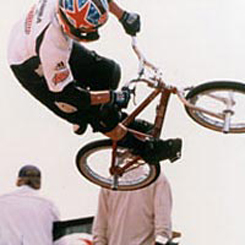
Kentucky's largest single event, this celebration is held during the two weeks in April preceding the Kentucky Derby. More than 1.5 million people come to Louisville annually to attend the broad spectrum of events, numbering more than 70, from the Great Steamboat Race to the Pegasus Parade to the ESPN X-Trials. The opening ceremonies held on the Ohio River, dubbed "Thunder Over Louisville," is the largest annual fireworks show in North America. Other cherished events are the Run for the Roses and the Great Balloon Race. Held since 1956, it is put on with the help of 4,000 volunteers and raises more than $250,000 annually for charitable organizations, although more than half of the events are free. 20 photographs and background text document the festival.
Fancy Farm Picnic
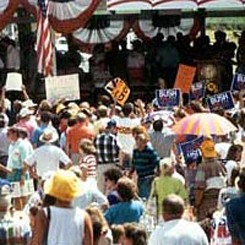
For 120 consecutive years, picnickers and politicians have been making their way to Fancy Farm for this annual event, held the first Saturday of August at St. Jerome's Parish in Mayfield. It grew out of a family reunion in the 1830s held at Fancy Farm, 10 miles west of Mayfield, the county seat of Graves County. For years the picnic was held down by the creek where the water was clean and clear and the trees gave abundant shade for a nice summer get-together. The men barbecued sheep and the ladies brought the trimmings. Games were played, and everyone had a great time. Gradually, the picnic evolved into an annual homecoming. After a hiatus during the Civil War years, the picnic resumed in 1880. Politicians began to attend the picnic early on, since, at that time, elections were held one week later.
For years, political oratory was held under a massive oak tree. When lightning struck the tree in 1974 and it died, Kentucky Governor Louie Nunn quipped: "Too much fertilizer will kill anything." Politicians who have attended over the years include Texas Senator Lloyd Bentsen, Kentucky Senators Wendell Ford and Mitch McConnell, Governor "Happy" Chandler, Vice Presidents Al Barkley and Al Gore. Over 18,000 pounds of pork and mutton are served, along with some 1,400 pounds of chicken, hamburgers, hot dogs, 400 pounds each of potato salad and cole slaw, and pies and cakes homemade by ladies of the community. Fancy Farm is entirely a community effort; there are no outside vendors at the picnic.
Senator Mitch McConnell hails the picnic as an event when "those aspiring to office [made] their case directly (and I mean directly) to the people." To McConnell, "Fancy Farm is, at once, equal parts carnival, barbeque picnic, church social, and political theater ... a grand Kentucky tradition."
Project documentation includes a three-page essay, photographs, letters from state and national politicians, a newspaper article, and several copies of the St. Jerome newsletter.
Kentucky's Bourbon Tradition
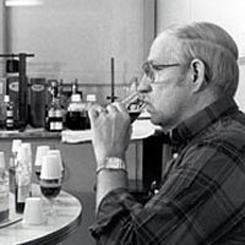
Bourbon production is one of the bluegrass state's most important and enduring legacies, reaching back to early settlers. Ninety-eight percent of all bourbon is made in Kentucky, according to the Kentucky Distillers Association.
Though historians cannot pinpoint exactly when and by whom bourbon was invented, most agree that settlers to Kentucky at the end of the 18th century brought their whiskey-making knowledge with them. Because corn grows better in Kentucky than rye or wheat, distillers substituted corn for those grains found in traditional whiskey recipes. Folklorist Gerald Alvey estimates that by 1812 at least 2,000 stills dotted the bluegrass landscape, and one in five farmers produced some type of "corn whiskey" to supplement their incomes.
Whiskey served a variety of purposes in antebellum Kentucky. It was used to treat medical conditions, such as snake bites, fever, and teething. Used-up mash proved to be a valuable nutritional supplement for livestock. Because of whiskey's portability and long shelf live, it also functioned as currency. By the 1840s the term "bourbon" had come into common usage. Around the same time, Kentucky distillers discovered that storing "corn" whiskey in charred white oak barrels imbued the spirits with a unique color and flavor; white corn whiskey turned a rich brown and picked up a smoky oak flavor.
Because of the Civil War and later during prohibition, the production of bourbon and all spirits suffered. By the 1950s, the bourbon industry rebounded, then lagged because of the popularity of scotch, gin and vodka. In recent years, Kentucky's distinct whiskey has enjoyed a renaissance as contemporary distillers, including Buffalo Trace, Wild Turkey, and Labrot and Graham, have focused on the production of premium bourbons intended for connoisseurs rather than the mass market.
Bourbon has had a flavorful role in Kentucky culture. The mint julep, made from mint, sugar, water and bourbon, is perhaps best known as the unofficial drink of the Kentucky Derby. For most Kentuckians, julep making is a folk ceremony, a heritage of the Old South, and is best performed by a Kentuckian. Bourbon is also a key ingredient in many regional culinary traditions, such as the "bourbon ball" chocolate confection, and bread pudding with bourbon sauce.
Jacksonian Days Festival, Scottsville
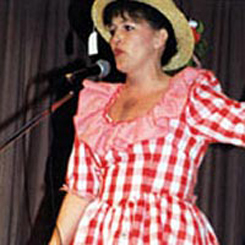
Featuring Allen County history, musical talent, arts and crafts and other entertainment, Jacksonian Days Festival is the largest celebration in Scottsville and Allen County, Kentucky. The two-day weekend Festival will celebrate its nineteenth year in 2000. Conceived by the Scottsville Women's Club as a community festival day, it takes place on the Scottsville Public Square at the site of the old Jacksonian Hotel, presently the site of the Scottsville Public Library. The Jacksonian Hotel housed many oil field workers and tourists that flooded Allen County after the discovery of a large shallow oil field in the 1920s. The Jacksonian, rebuilt in the late 1920s, was home to many local businesses as well as lodging for temporary oil field workers, and boasted one of the finest dining rooms in the mid-South. The Jacksonian was closed in the 1970s, but, for the locals, its name remains synonymous with good food, travel and good times. Thus was chosen the name -- Jacksonian Days -- for the first county-wide festival in Allen County.
Jacksonian Days activities include a 5K cross-country run, an arts and crafts show, a children's carnival and a food court. Proceeds from the Festival go to fund the Scottsville Women's Club's various community service projects. In 1990, the Women's Club was joined in its sponsorship of the Festival by the Scottsville Allen-County Chamber of Commerce. Events added in 1990 were a Fiddlers and Bluegrass Jamboree and the initiation of a local musical variety spoof, the "Grandest Ole Opry." With the exception of high school graduations, the Grandest Ole Opry attracts the largest crowd of any Allen County event.
With the 2000 Jacksonian Days, a new date -- Memorial Day weekend -- will become home to the festival. The 2000 event will add new activities: an open horse show; a one-mile fitness walk; a preschool "Tot Trot"; a "Cruise-In" car, truck and bike show; Allen County Historical Society heritage crafts demonstrations and historical re-enactments; a quilt show; an open-air concert featuring local gospel, bluegrass and country music; and an expanded children's carnival, arts and crafts show and food court.
Trail of Tears Pow Wow
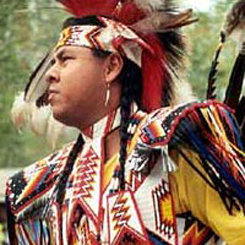
This premier event is held annually at the Trail of Tears Commemorative Park in Hopkinsville, Kentucky. The pow wow provides an opportunity for participants to celebrate through dance, drumming and singing, traditional foods, crafts and storytelling, the great heritage of the American Indian, the original inhabitants and caretakers of the United States of America. For the visitor, it provides an exceptional educational experience.
The idea for hosting a Pow Wow in Hopkinsville was developed by the Trail of Tears Commission in 1988 as a way to commemorate the 150th anniversary of the tragic and cruel Cherokee removal from their ancestral homelands in the southeast, across the Mississippi to Indian Territory, which is now Oklahoma. Known as the "trail of tears," this forced removal affected Hopkinsville, which was along the trail, and served as a major stopping point for the Cherokees during the harsh winter of 1838 and 1839. Kentucky is particularly relevant to Cherokees, since the state land was once a part of Cherokee ancestral homeland.
The president and founder of the Trail of Tears Commission, Beverly Baker, began work in late 1985 to gain support for his idea for a commemorative park, and to encourage interest in acknowledging this tragic event in local history. Volunteers joined Baker in pursuing support of a park and designation of the Trail of Tears as a National Historic Trail. City and county governments, and a church donated $1,000 in seed money to the group. Baker's group was incorporated in Kentucky in 1987 to "develop and promote historical significance of the Trail of Tears to Hopkinsville and Christian County; to create a park that would pay tribute to the importance of Native American Indians to our history and culture, with special emphasis on the Cherokee; and to encourage tourism to the area through the park, its museum and activities."
With tremendous enthusiasm, a letter writing campaign to the U.S. Congress was undertaken by community members, schools, and government officials. A congressional bill supporting the park was introduced, which President Reagan signed in 1987. Land, which contained the graves of Chief White Path and Fly Smith, was donated for the park by the Kentucky New Era Newspaper and the Henry Morris family. In 1989, statues of the chiefs were unveiled at the park.
A proclamation by the governor set 1988 as the Year of the Trail of Tears. With the 150th anniversary approaching, a "competition" pow wow was planned to encourage attendance by Native Americans to a "non-Indian" land. Costumed dance competitions were in a number of categories, which included traditional, grass, straight, and fancy shawl dances. In 1992, the pow wow celebrated the Year of the American Indian.
Craft demonstrations were added to the festivities, which began to attract out-of-towners. The state provided a grant to help develop the pow wow grounds as the Trail of Tears Commemorative Park, which opened in 1993. In 1994, a tipi display added. In 1996, the National Park Service designated the park as a certified site on the National Historic Trail of Tears-the first non-federal property to receive this designation.
Since 1989, pow wow proceeds have supported development, operation, and maintenance of the park and its heritage center. School and scout groups, local clubs, and tourists regularly visit the part and center.
 Print
Print Email
Email







